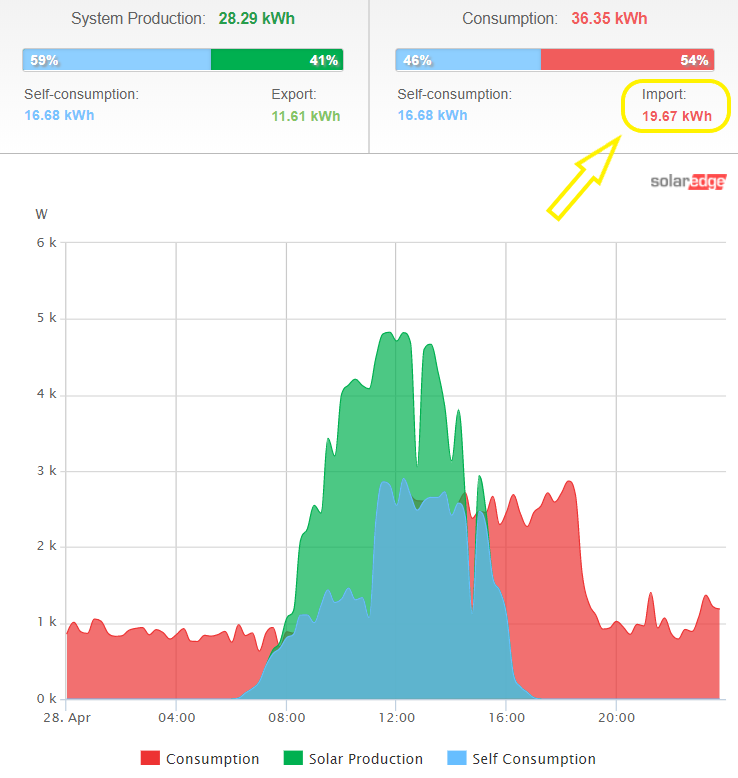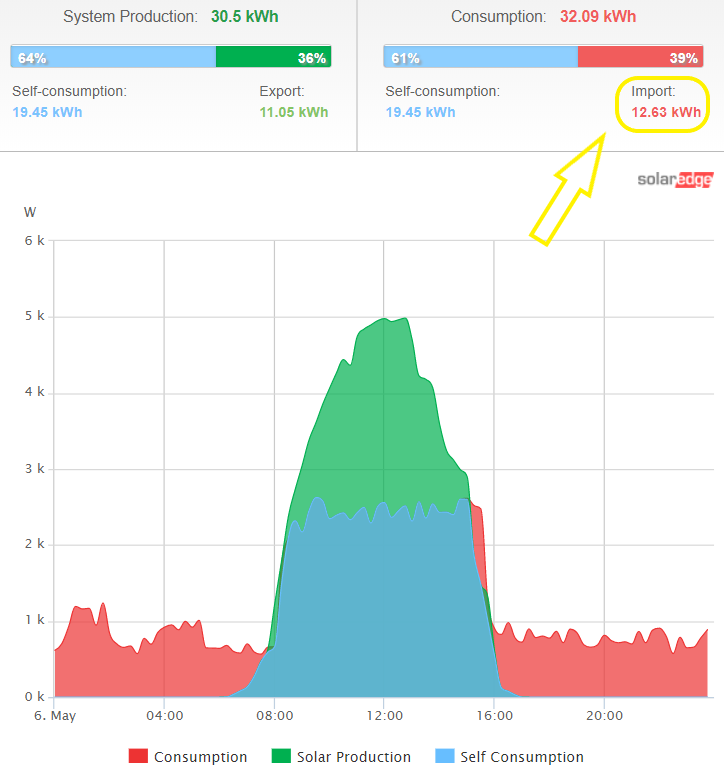To start with it would help to answer the question ‘what is a smart meter?’. I don’t like reinventing the wheel, so I will quote my friends in the Queensland Government – ‘Digital meters (also known as advanced meters, smart meters, or type 4 meters) are electricity meters which can record electricity consumption in 30 minute intervals.’
Why is it important to know your electricity consumption is in 30-minute intervals? Firstly, because if your meter is smart, you should listen! Secondly, and probably most importantly, there are enormous savings that can be uncovered through the data a smart meter can provide.
Time for a short educational case study.
Monitoring Without a Smart Meter
Most solar power system today have (our should come with) an inverter that has some sort of online monitoring platform allowing you to see how much electricity your solar system is producing. It should at the very least show you a total daily kilowatt hour (kWh) production amount a solar power system produces.
For visual effect this is what a solar power production curve looks like without a smart meter.

In the above image we can see that during the course of a day the solar power system started generating electricity around 6:00am. From there it gradually increased production to peak around noon before ramping down to shutdown around 5:30pm. This is the usual life of a solar system on any given day in April. Not a bad day of production, and some useful information for a system owner to know.
Monitoring with a Smart Meter
Now for some more detail – the below image clearly shows the overlay of ‘consumption’ measured by the smart meter. The red curve is the electricity consumed by the household over a 24-hour period and the blue represents the household power supplied by solar power system. In this instance the areas of the green we can see are exported back into the grid. During daylight hours in the below example it would be fair to say the house drew almost none from the grid – fantastic outcome. (Note – over a 24-hour period the house consumed a total of 19.67kWh of grid electricity. This is important later)

Using the Smart Meter to Save Money
Where a smart meter really starts to become useful is trying to analyse the household consumption patterns and improve how the family uses electricity to further reduce their costs. This above illustration clearly shows that there is something drawing electricity at a rate of almost 3kW between the hours of 11:30am and 7:00pm. When we investigated the problem, we found the pool timer was set to run between these hours (not during the day as the customer had had originally thought). This makes a clear case to improve their power usage and reduce electricity costs, and by simply changing the pool timer we ended up with the below profile.

A profile so neat is looks superimposed!! Not the case. This is simply the extra mile of service you can expect from Spinifex Energy, and what keeps us up at night staring at our monitoring apps in excitement… Solar nerds.
To dig a bit deeper and analyse the likely savings we have just produced for the customer we can do some simple maths:
From earlier in this post we saw the grid energy imported that day was 19.67kWh.
Now above after changing the pool filter timer we can see grid energy imported was 12.63kWh, therefore a 7.04kWh reduction in grid energy consumed that day.
This might not seem like much, but over the course of a year this equates to 2,569.6kWh. This family are paying $0.2451/kWh, so we have produced a further $629.80 in savings per annum from installing a smart meter. Or over the lifetime of the system – $15,745.23!!!
Conclusion
Smart meters are just that – SMART! Of course, they cost a little extra to install but they are absolutely worth it. From the very simple example above a smart meter can help anyone analyse their current electricity consumption and find ways to save more money (and reduce the stress on our fragile environment). There is nothing complicated about it, just some simple data laid out visually and easy to understand.
As always if you have any questions about this post please don’t hesitate to drop me a line.
You can also find some more free reading on going solar HERE.

